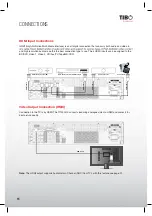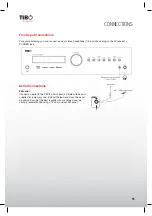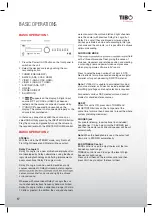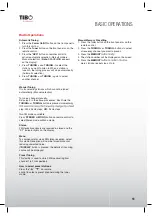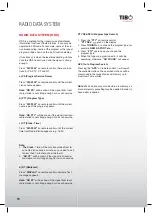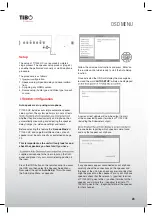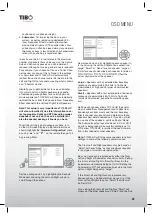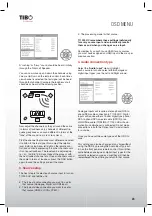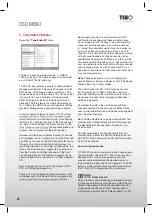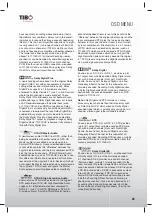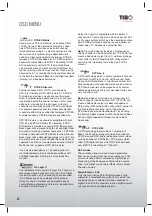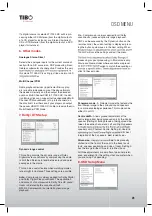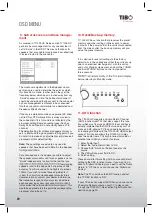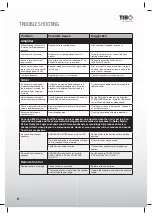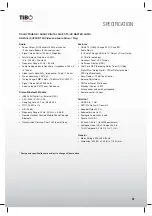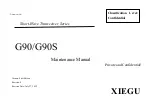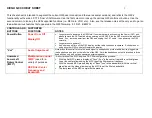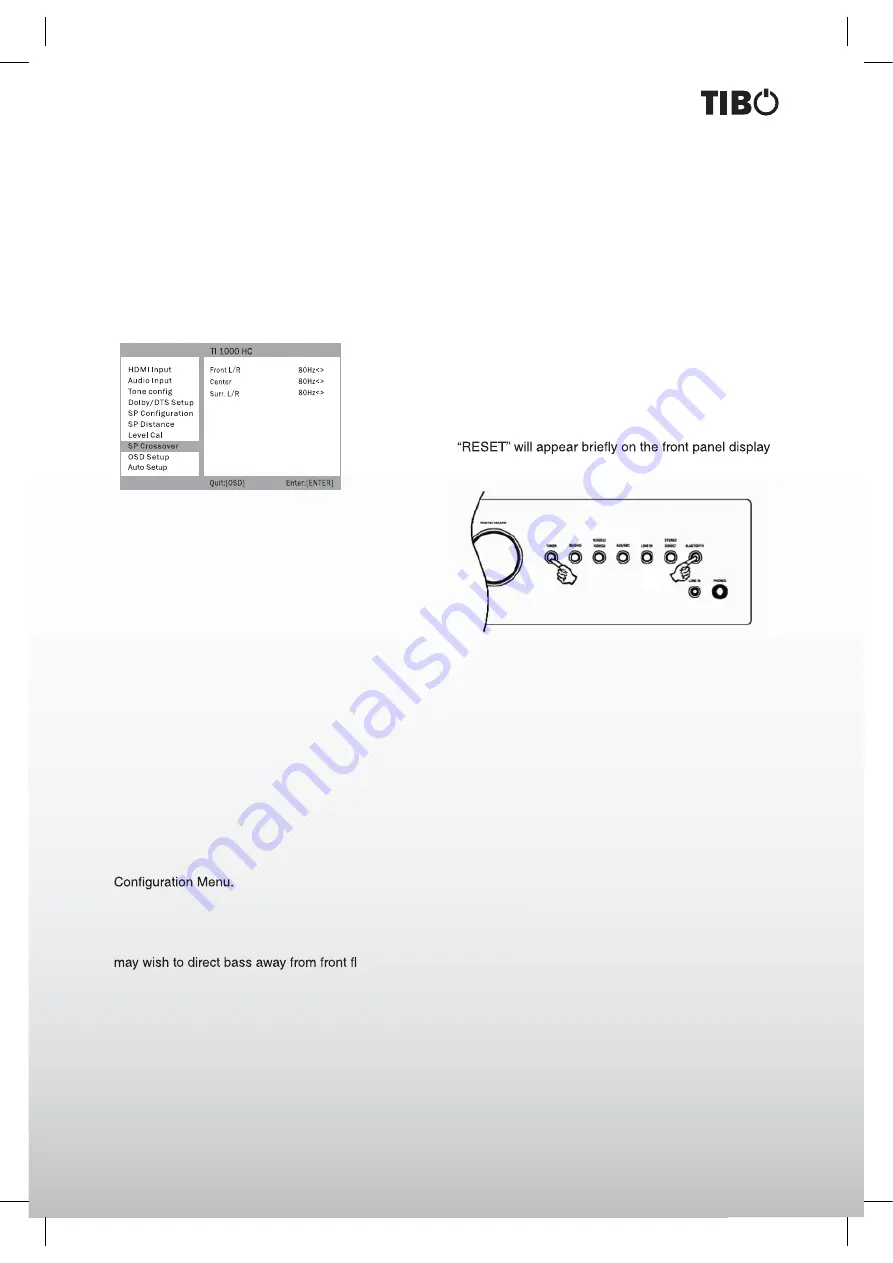
29
Turn it back on
OSD MENU
9 . Sub crossovers and bass manage-
ment
As covered in TI 1000 HC Setup section TI 1000 HC
performs bass management for any speaker that is
set to “Small” in the OSD. This means that bass for
speakers that are unable to reproduce bass effectively
is instead routed to the subwoofer.
The crossover adjustments in the Speaker crosso-
ver menu are used to determine the point as which
this transition is made. In other words they set the
frequency below which bass is routed away from any
“Small” speakes and into the Subwoofer channel. It
should be understood that bass sent to the subwoofer
by bass management is different to bass encoded
into the surround-sound material as a dedicated Low
Frequency Effects channel.
If the source material contains a separate LFE chan-
nel (ie DD or DTS material) this is always routed to
the subwoofer (if it is On) and is not affected by the
crossover setting. Some encoding types (Such as
Dolby PLII and Neo:6) do not actually have a LFE
channel.
The default setting for all bass management crosso-
vers is 80Hz and is a good global starting point. If you
do not wish to make any adjustments simply leave all
crossovers at this default setting.
Note:
These settings are actually only used for
speakers that have been set to Small in the Speaker
For advanced users it is however possible to adjust
the speaker crossovers used for any speakers set as
“Small” independently to allow for the fact that you
oorstanding
speakers (and to the Subwoofer) at perhaps 50Hz
but away from Surround Left and Rights at perhaps
100Hz. If you wish to make these adjustments it
is best to consult your loudspeaker manufacturers
documentation or contact your dealer to determine
the frequency response of your system and where
each speaker types bass response starts to tail off
(often called the 3dB or 6dB roll off/cutoff point). This
would be approximately the point the corresponding
crossover should be set to.
10. Reset/Back-up memory
TI 1000 HC has a function that preserves the preset
memory and other settings. In the event of a power
failure, or if the power cord of the unit is disconnected
from the mains outlet, the back-up memory will pre-
serve the preset memory.
If it is desired to reset all settings to their factory
defaults (or in the unlikely event that the unit locks up
due to an electrical discharge etc), with the unit on
and out of Standby mode press and hold the TUNER
and BLUETOOTH buttons on the front panel for
three seconds.
before returning to Standby mode.
11. ARC function
The TI1000 HC supports an Audio Return Channel
(ARC) function from TVs that also support this func-
tion (which must feature an HDMI1.4 input and have
actually implemented the ARC feature, see your TVs
manual). ARC allows a TV to send audio back down
its incoming HDMI lead to the TI1000 HC HDMI output
socket. This function allows the TI1000 HC to play
back the audio from a TVs built-in terrestrial cable or
satellite tuner whilst you watch it’s picture.
1. Enter “Audio Input”.
2. Select the “Audio Return” item to “On”.
3. Choose “AUX” which on the front panel as the
source.
4. The VFD will show out “AUX-ARC”.
5. Finish setting.
Please note, after this setting, AUX source will default
setting to the ARC function forever. If you want to go
back to “Digital and Analog”, you need to set the “Audio
Return” to “Off”, then you can choose the “Digital and
Analog”.
Note:
The TV should has the ARC function and set
the TV CEC function to “ON”.
If your TV does not support ACR than you have to use
Coaxial or Optical output on your TV to play sound
through the TI1000 HC. See section Digital Audio Con-
nection on page 14.

